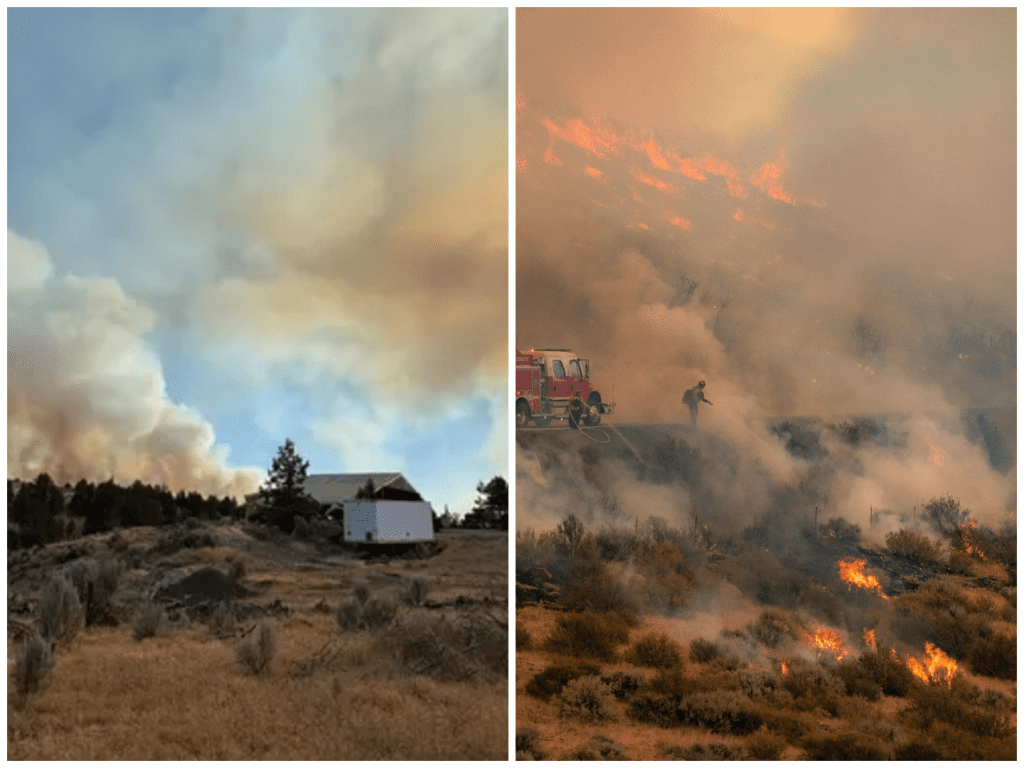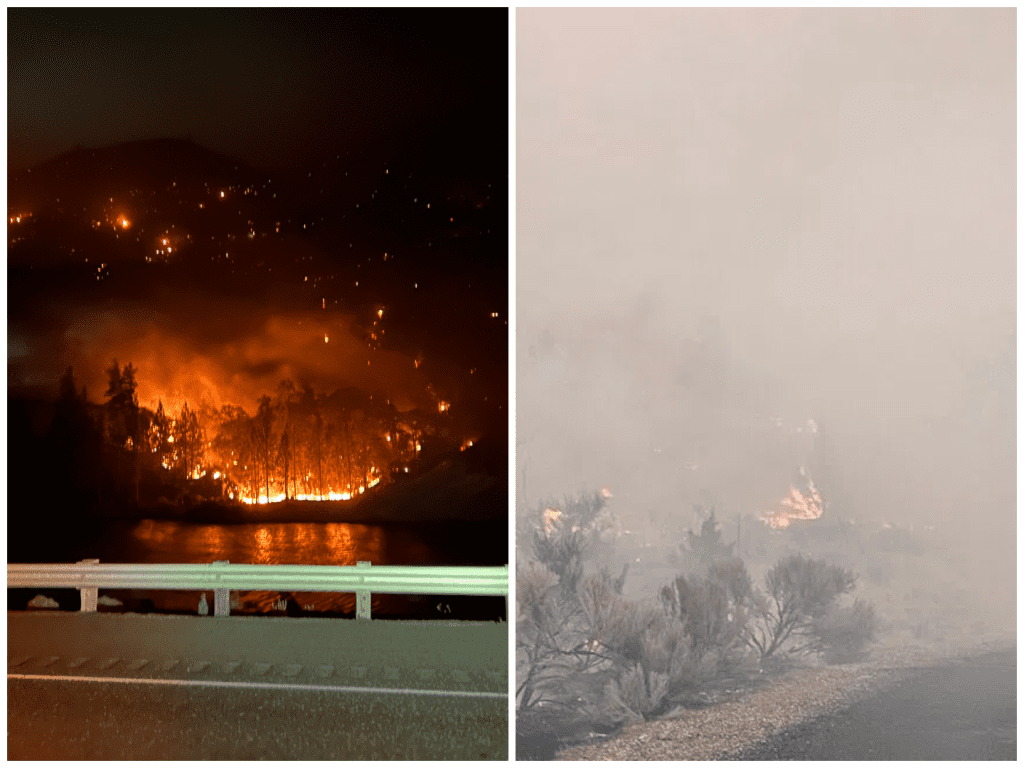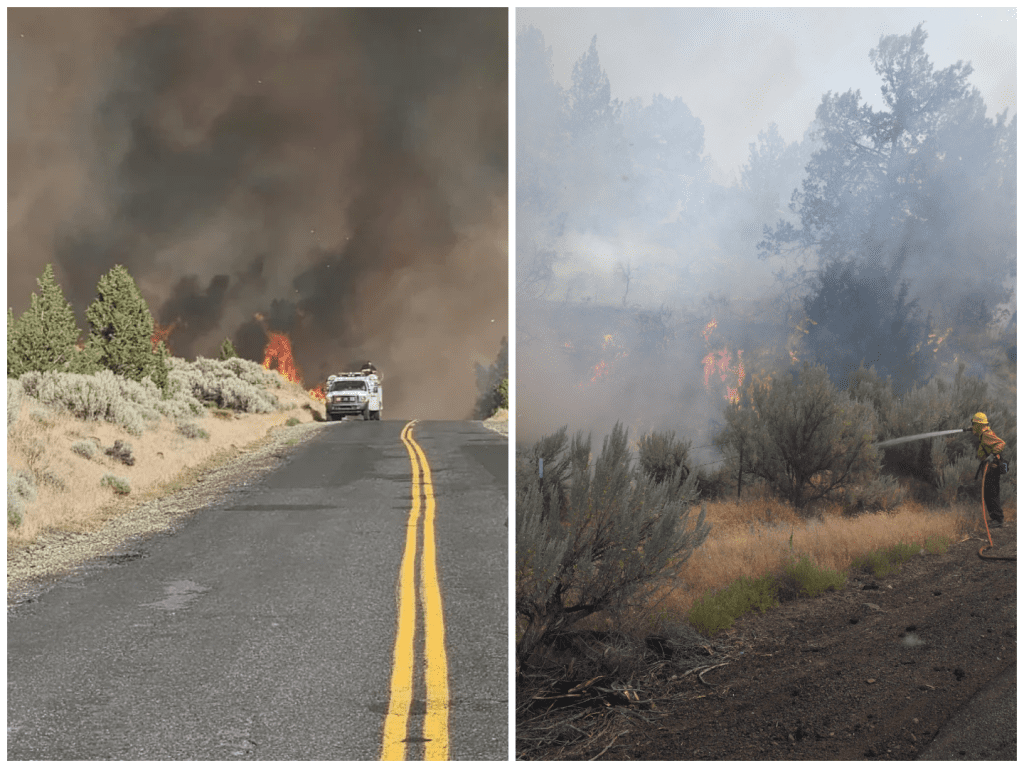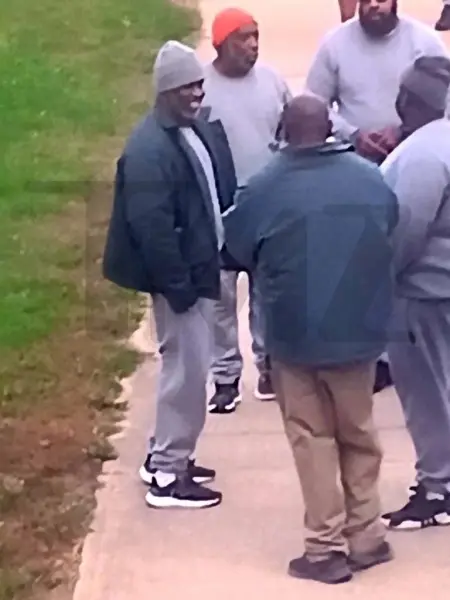Oregon’s Sky Turned to Smoke as a Sudden Wildfire Consumed Over 77,000 Acres in Just Hours

It started like any quiet evening in the rolling countryside of central Oregon—dry heat clinging to the air, the kind of summer day that feels heavy but still safe. Then the wind picked up. A whisper at first, moving through the grass and trees, and then a howl. By nightfall on July 13, 2025, that whisper had turned into a roar as flames erupted into one of the largest wildfires the region had seen in recent memory.
The fire ignited in Jefferson County and quickly pushed through the dry, grassy hills near Madras and La Pine. Fueled by relentless winds and weeks of arid weather, it didn’t crawl—it raced. Emergency alerts began pinging residents’ phones just after midnight, and for many families, sleep ended in panic. Some had only minutes to gather what they could and flee into smoke-filled darkness.
By morning, over 77,000 acres had been swallowed by the blaze. Roads were closed, homes were threatened, and helicopters sliced through thick clouds of ash as firefighters scrambled to hold the line. It was a terrifying reminder of how fast the landscape can change, and how unpredictable nature has become.
Aerial footage that surfaced online showed the scale of devastation. Dense white smoke blanketed the highways. Flames licked at fences and fields that, just days earlier, had looked peaceful and untouched. What was once a scenic view along Highway 97 transformed into a smoky hellscape, cars crawling past the blaze like they were trying not to disturb a sleeping beast.
Officials named it the Darlene 3 Fire, and said it grew faster than expected due to extreme drought conditions and gusty winds that blew through the Cascade Range like a bellows. Over 300 firefighters from state, local, and federal agencies were quickly dispatched to the scene, setting up containment lines and protecting structures. But the conditions were working against them.
What made this fire so dangerous wasn’t just its speed—it was the unpredictability. Fire officials said embers were flying miles ahead of the blaze, starting new spot fires faster than they could be put out. Some crews had to pull back and regroup as flames leaped firebreaks they’d just cut. At times, even the aircraft couldn’t fly safely due to the thickness of the smoke.
In La Pine, where evacuation warnings hit quickly, families packed into local shelters or slept in their cars. Volunteers handed out water bottles and masks, while others simply sat in stunned silence watching the horizon glow red. One woman said she saw deer running down the road near her home, as if the wildlife already knew something terrible was coming.
Residents like 62-year-old Gerald Thompson, who’s lived in Madras his entire life, said he’d never seen anything like it. “It’s like the mountain just caught fire all at once,” he told a local reporter. “We’ve had fires, sure. But not like this. Not overnight, and not with this kind of force.”

As of July 17, the fire remains only partially contained. Crews are still battling spot fires, and the threat remains high as the region continues to experience record-high temperatures with no rain in the forecast. Local officials are urging people to stay vigilant, listen to evacuation orders, and keep roads clear for emergency responders.
Environmental experts point out that Oregon’s wildfire season has become more intense in recent years, with larger and faster-moving fires becoming the norm rather than the exception. The combination of hotter summers, less rainfall, and more frequent windstorms is a recipe for destruction.
What makes it all feel heavier is that this fire—just one among dozens currently burning in the Western U.S.—feels deeply personal to the people who live there. It’s not just about acres or containment percentages. It’s about homes, pets, photos, memories. One family lost their backyard farm that had been passed down for generations. Another couple, newly married, returned to find their honeymoon cabin reduced to ash.
Social media quickly filled with images and stories. Videos showed pets being carried into rescue trucks, children holding their stuffed animals as they walked through shelter doors. One clip, viewed over a million times, showed a firefighter comforting a crying child, handing her a water bottle and patting her back as the orange glow lit up the skyline behind them.
But amid the fear and sadness, there’s also strength. Oregon communities have always been resilient, and this time is no different. Volunteers are cooking meals at churches. Local businesses are donating supplies. Neighbors are checking on each other and opening their homes to those who have none left.
As the fire continues to burn, the focus is now on keeping people safe and supporting recovery efforts. Fire crews are cautiously optimistic about progress on the northern and western flanks, where dozer lines are starting to hold. But the southeastern side remains active, with shifting winds threatening to spread it further toward rural residential areas.
It will take weeks—maybe months—before the damage can be fully assessed. But for many, the scars will last much longer. The feeling of rushing to pack a life into a duffel bag. The fear of not knowing if you’ll have a home to return to. The surreal sight of your town swallowed by smoke.
And yet, even with all that, there’s something powerful in the way people pull together. It’s what gives hope after devastation. What makes rebuilding feel possible, even after the worst kind of night.
For now, Oregon watches the horizon and prays for rain. The sky still glows, the smoke still rises—but the people remain standing.


